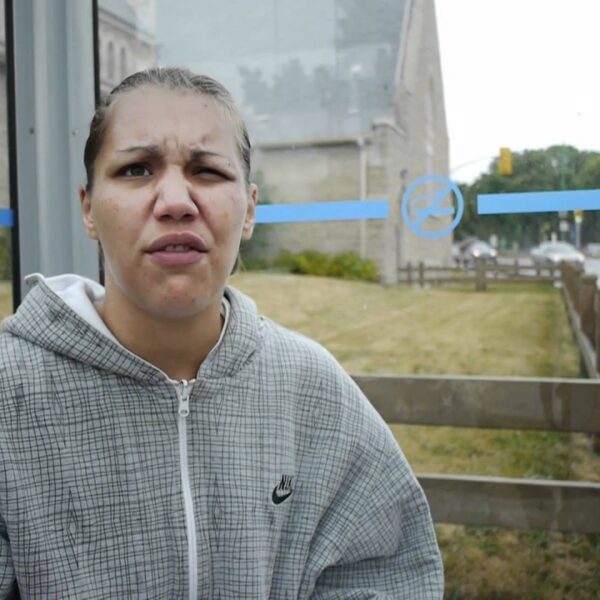In just six years, social housing waitlists grew by a whopping 320% in the Yukon community.
A new report criticizes the lack of progress in the region concerning housing, homelessness, and services, particularly in the downtown Whitehorse section. The full report on this issue, released by the Office of the Auditor General of Canada, suggests that the problem is multi-pronged, but solutions are available.
Here’s a look at what’s fueling the crisis.
The Perils of Homelessness in Yukon, Canada
“It’s a hard life not having a home. Home is where the heart is,” explained Cambridge Bay, Nunavut native Phyllis, an Inuk woman who conducted an open interview with APTN News.
Phyllis is one of approximately 200 adults experiencing homelessness in the Whitehorse section of Yukon. There are also 60 more homeless children who are additional victims of inaction.
Concerns Related to Housing Access Initially Sparked the Investigation
While the homeless crisis is unfolding nationwide, the investigation that produced these findings was initially the result of two main components:
- Concerns related to housing access, which was particularly difficult for residents in this region of Canada to obtain. This is especially true for people and families already deemed vulnerable by government standards.
- Recognition of the importance of housing in regards to the quality of life. Investigative sources displayed a firm understanding of the impact housing has on quality of life as well as how it intersects with other social sectors including:
- education
- employment
- physical health
- emotional well-being
- security
- family welfare
- regionwide economic stability
Investigative Results Show a 320% Increase in Housing Needs Contrasted with Just a 14% Increase in Population
These results prove that both the Department of Health and Social Services and the Yukon Housing Corporation have failed to adequately address, let alone rectify, the housing continuum challenges in the region.
While safe and affordable housing might not seem like a civil rights concern on the surface, access to it directly influences almost every other sector of social standing. Housing access remains a cornerstone from physical and mental health to incarceration and employment, from educational outcomes to general welfare and stability.
While tactics to reduce the homeless crisis have been enacted, the results from these programs have been a drastic disappointment. This much is reflected in the newly emerging data.
A Possible Silver Lining: The Report Identifies Key Problem Areas and Proposes a Myriad of Possible Solutions
Pointing out discrepancies and challenges and quantifying the magnitude of the problem are great ways to start. But real change does not take place without viable solutions on the table. Fortunately, this report features a long list of possible solutions. If implemented promptly, these solutions could make a world of difference for the region’s locals, many of whom are on a seemingly never-ending list for housing.
The department identified nine key components of resolution, all of which the Yukon Housing Corporation has agreed to. Some proposed solutions include:
- Working cooperatively with housing partners and social services to identify and resolve problems before they start
- Carefully reviewing rental assessments to improve access to housing programs and to prioritize the most vulnerable residents
- Establishing performance indicators that measure the success rate of housing programs and convey accurate, actionable results
- Identifying and repairing gaps in information systems to convey reliable, up-to-the-minute housing data
- Carefully monitoring interactions with third-party housing providers
- Having appropriate emergency repair systems in place
- Regularly conducting needs analysis and more
Advocates and Coalitions Forge Forward with a Full Summer of Housing Plans in Place
The above-listed propositions are all agreed-upon suggestions. However, in the end, the results will matter most.
It’s important to remember that before this audit, both the Department of Health and Social Services and the Yukon Housing Corporation already had programs in place. They simply were not working to rectify the problems.
As current Yukon Housing minister Ranj Pillai states in his interview with CBC, the only thing that can restore public trust in the Yukon housing sector is action. Government and corporate action are slated to get off to a sizzling start this summer, with new tenant policies and housing frameworks already on the horizon.
Be Sure to Stay on Top of Local Legislators to Ensure Success and Implementation
One of the critical components of the Yukon housing crisis is an overall lack of affordable housing in the region. This problem exists nationally but is particularly prominent in Whitehorse and surrounding areas at this time.
If you want to assist the ever-growing waitlist of Yukon residents who are vulnerable to or, in some cases, already experiencing homelessness, contact your local legislators. Ask them what their plans are for creating a future filled with safe, affordable housing for all Canadians.













